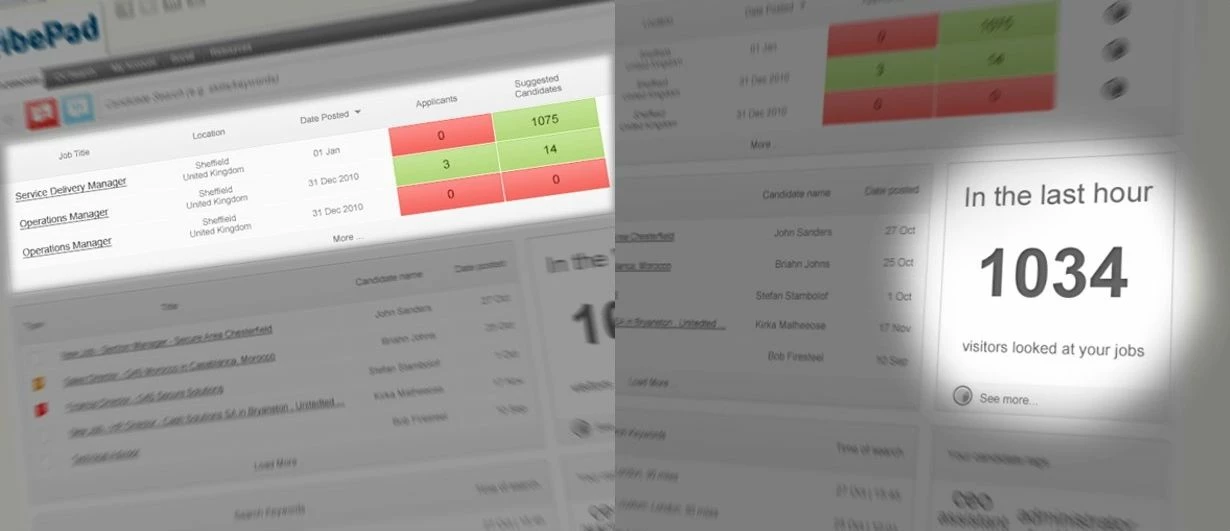
Partner Article
Six steps towards effective ‘internal mobility’
For companies wanting to reduce their cost-per-hire and shift towards a more efficient recruitment model, then ‘internal mobility’ can be the answer – allowing talent to move around an organisation based on desire, circumstance, or where their skills are needed. Lisa Scales, co-founder of next generation recruitment platform, TribePad, looks at six steps that companies can take towards developing an effective“ internal mobility“ strategy.
Internal employees should all be treated as ‘internal jobseekers’ but this is often overlooked when a new position is being recruited for. An organisation gets a snapshot of an individual when they are recruited, but it’s important to create an environment for an employee to continually add to their profile and record their skills, helping the company identify the appropriate internal talent.
Understand who “owns” internal mobility in an organisation. Historically this has been with talent or development departments, but as the ‘direct sourcing’ model matures, it increasingly shifts towards talent acquisition.
Establish buy-in to internal mobility at an executive level. This is about all senior management being comfortable with employees moving around the business. Believe it or not, department heads aren’t always keen to ‘green light’ their best staff to move to a different office or department!
Ensure that staff feel they are able to suggest a redeployment for themselves, without fear of vilification. Effectively communicating to staff about an internal mobility initiative is therefore key. Many organisations consider a series of ‘soft launch’ initiatives such as sending e-cards to key staff, sharing information on jobs via an intranet or social media channels, panel discussions, focus groups, as well as video messages from a company’s CEO.
Technology also plays an important role. It is now easy to “house” internal and external jobseekers in the same environment and utilise the wealth of talent already in the business. Being able to identify skills in the business and considering a more proactive internal mobility programme can seem to be a large gap to cross over to, but the benefits outweigh the cultural shift required.
Finally, it’s important to recognise employees as a valuable knowledge-rich asset, and not only through skills and training. That means retaining them should be top priority.
One thing’s for sure, businesses can ill-afford to ignore internal mobility if they want to remain competitive in today’s challenging markets. The time is now to look within.
This was posted in Bdaily's Members' News section by TribePad .
Enjoy the read? Get Bdaily delivered.
Sign up to receive our popular morning National email for free.








 Time to stop risking Britain’s family businesses
Time to stop risking Britain’s family businesses
 A year of growth, collaboration and impact
A year of growth, collaboration and impact
 2000 reasons for North East business positivity
2000 reasons for North East business positivity
 How to make your growth strategy deliver in 2026
How to make your growth strategy deliver in 2026
 Powering a new wave of regional screen indies
Powering a new wave of regional screen indies
 A new year and a new outlook for property scene
A new year and a new outlook for property scene
 Zero per cent - but maximum brand exposure
Zero per cent - but maximum brand exposure
 We don’t talk about money stress enough
We don’t talk about money stress enough
 A year of resilience, growth and collaboration
A year of resilience, growth and collaboration
 Apprenticeships: Lower standards risk safety
Apprenticeships: Lower standards risk safety
 Keeping it reel: Creating video in an authenticity era
Keeping it reel: Creating video in an authenticity era
 Budget: Creating a more vibrant market economy
Budget: Creating a more vibrant market economy